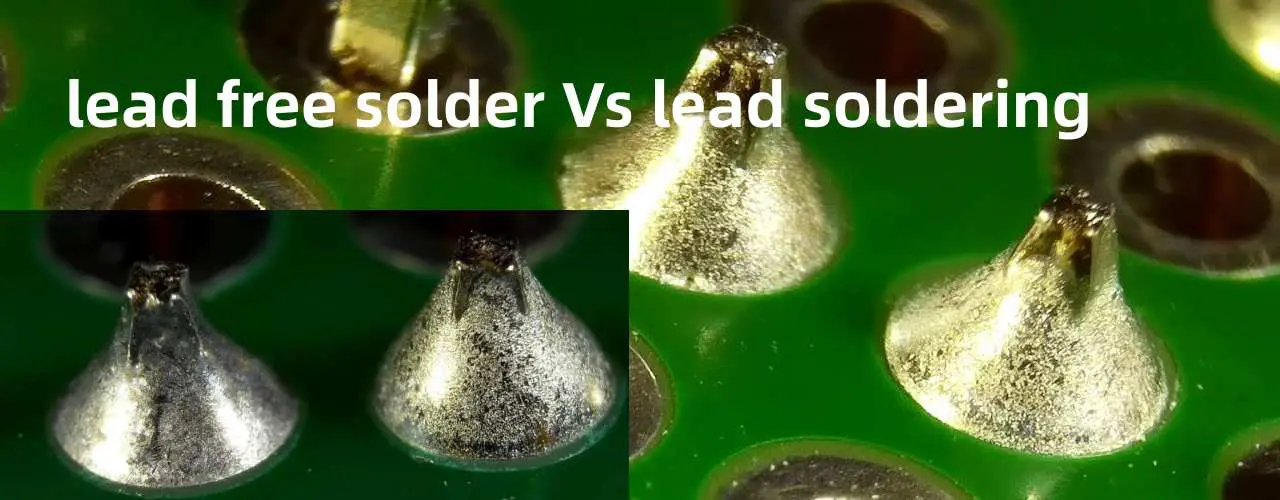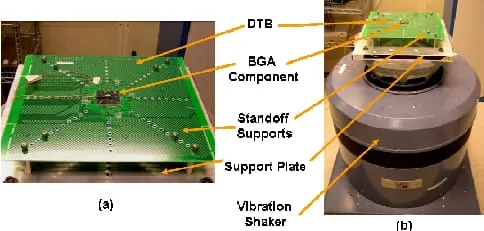In the world of electronics manufacturing, the shift to lead-free soldering has been a dominant trend due to environmental regulations and health concerns. However, leaded assembly continues to hold a significant place in specific industries and applications. So, where does leaded assembly still reign supreme? Leaded assembly remains critical in military applications, aerospace systems, and high-reliability electronics due to its proven performance under extreme conditions, superior vibration resistance, and suitability for low-temperature soldering processes.
In this comprehensive guide, we’ll explore the unique advantages of leaded assembly and dive deep into the specific areas where it continues to outperform lead-free alternatives. Whether you’re an engineer working on mission-critical projects or a procurement specialist seeking reliable solutions, this blog will provide valuable insights into why leaded assembly is still a preferred choice in certain demanding sectors.
Why Leaded Assembly Still Matters in Modern Electronics
Leaded assembly, which typically involves the use of tin-lead solder, has been a cornerstone of electronics manufacturing for decades. Despite global regulations like the European Union’s RoHS (Restriction of Hazardous Substances) directive pushing for lead-free alternatives, leaded solder remains exempt in specific high-stakes industries. The primary reason is simple: reliability. Leaded solder offers unique properties that are hard to match, especially in environments where failure is not an option.
Tin-lead solder, often in a 63/37 ratio (63% tin, 37% lead), has a lower melting point of approximately 183°C compared to many lead-free alternatives, which can require temperatures above 217°C. This lower melting point reduces thermal stress on components during assembly, making it ideal for delicate or heat-sensitive parts. Additionally, leaded solder forms more ductile joints, which can better withstand mechanical stress and thermal cycling—key factors in harsh operating conditions.

Leaded Assembly in Military Applications: Unmatched Reliability
When it comes to military applications, reliability under extreme conditions is non-negotiable. Military electronics often operate in environments with high vibration, shock, and temperature fluctuations—think of equipment in combat vehicles, naval ships, or battlefield communication systems. This is where leaded assembly military applications shine.
Leaded solder’s ability to form strong, flexible joints helps absorb mechanical stress, reducing the risk of cracks or failures during intense vibrations or impacts. Studies, such as those referenced by military standards, have shown that tin-lead solder joints can endure vibration frequencies up to 2000 Hz with minimal degradation, compared to some lead-free alloys that show early signs of fatigue under similar conditions. This vibration resistance is critical for ensuring that solder joints in military hardware remain intact during high-stress operations.
Moreover, military systems often require long-term reliability, with equipment expected to function flawlessly for decades. Leaded solder has a proven track record of stability over time, resisting issues like tin whisker growth—a common problem in some lead-free solders that can lead to short circuits. For these reasons, many military specifications still allow and even prefer the use of leaded assembly to meet stringent performance requirements.

Leaded Assembly in Aerospace: Performance at Extreme Altitudes
Similar to military applications, leaded assembly aerospace use cases prioritize performance and safety above all else. Aerospace electronics, found in satellites, aircraft avionics, and space exploration equipment, must operate in environments with extreme temperature ranges (from -55°C to over 125°C), high radiation levels, and intense mechanical stress during launch and flight.
Leaded solder’s lower melting point and ductility make it a preferred choice for aerospace applications where thermal cycling is a constant challenge. The flexibility of tin-lead joints helps prevent cracking during repeated expansion and contraction caused by temperature changes. For instance, in satellite systems, where repair is often impossible once launched, the long-term durability of leaded solder ensures that connections remain secure for the lifespan of the mission—sometimes exceeding 15 years.
Additionally, the aerospace industry benefits from leaded solder’s compatibility with low-temperature soldering processes. This is particularly useful when assembling components that cannot withstand the higher temperatures required for lead-free soldering, reducing the risk of thermal damage to sensitive parts like sensors or microcontrollers.

Leaded Assembly in High-Reliability Electronics: No Room for Error
High-reliability electronics span beyond military and aerospace into sectors like medical devices, industrial control systems, and telecommunications infrastructure. In these fields, leaded assembly high-reliability electronics applications are often chosen for their consistent performance and resistance to failure under stress.
For example, in medical equipment such as pacemakers or diagnostic machines, a single solder joint failure can have life-threatening consequences. Leaded solder’s ability to form robust, durable connections ensures that these devices operate without interruption. Its resistance to thermal fatigue is particularly valuable in systems that undergo frequent power cycles, where temperature changes can weaken solder joints over time.
In industrial settings, where electronics may be exposed to harsh vibrations from machinery, leaded solder vibration resistance plays a crucial role. Data from reliability tests indicate that tin-lead solder can withstand continuous vibration at amplitudes up to 20g (gravitational force) for extended periods, outperforming some lead-free alternatives that show joint degradation under similar conditions. This makes it a go-to choice for control systems in manufacturing plants or heavy equipment.

Leaded Solder Vibration Resistance: A Key Advantage
One of the standout properties of leaded solder is its exceptional vibration resistance. In applications where electronics are subjected to constant or high-intensity vibrations—such as in military vehicles, aircraft, or industrial machinery—leaded solder vibration resistance ensures that connections remain intact and functional.
The ductility of tin-lead solder allows it to absorb mechanical energy without fracturing. This is in contrast to many lead-free solders, which can be more brittle due to their higher tin content or alloy compositions like tin-silver-copper (SAC). Research has shown that under vibration testing at frequencies of 10-500 Hz, leaded solder joints exhibit a failure rate of less than 5% over 10 million cycles, while some lead-free alternatives show failure rates as high as 15% under the same conditions. This reliability is why industries with high-vibration environments continue to rely on leaded assembly.
For engineers designing systems for rugged environments, choosing leaded solder can mean the difference between a system that lasts for years and one that fails prematurely. This advantage is especially critical in applications where maintenance or replacement is difficult, such as in remote industrial sensors or deep-space probes.
Leaded Solder Low Temperature Soldering: Protecting Sensitive Components
Another area where leaded assembly excels is in low-temperature soldering. Leaded solder low temperature soldering is a significant advantage when working with heat-sensitive components or materials that cannot withstand the higher reflow temperatures required by lead-free solders.
As mentioned earlier, tin-lead solder melts at around 183°C, while many lead-free solders require temperatures of 217°C or higher. This difference of over 30°C can be critical when assembling components like LEDs, certain capacitors, or thin substrates that are prone to thermal damage. Low-temperature soldering with leaded solder minimizes the risk of warping, delamination, or component failure during the manufacturing process.
In addition to protecting components, low-temperature soldering also reduces energy consumption during assembly, which can lower production costs. This is particularly beneficial for high-volume manufacturing of electronics where even small savings per unit can add up significantly. For industries that prioritize both reliability and cost-efficiency, leaded solder’s compatibility with low-temperature processes remains a compelling reason to use it.
Challenges and Considerations with Leaded Assembly
While leaded assembly offers numerous advantages, it’s important to acknowledge the challenges associated with its use. The primary concern is environmental and health-related, as lead is a toxic substance. Strict regulations in many regions restrict its use in consumer electronics, limiting leaded solder to specific exempt industries like military and aerospace.
Manufacturers using leaded assembly must also ensure proper handling and disposal practices to minimize exposure and environmental impact. This includes using appropriate personal protective equipment (PPE) during soldering and adhering to waste management guidelines for lead-containing materials.
Additionally, as the industry continues to shift toward lead-free solutions, the availability of leaded solder and compatible components may decrease over time. Engineers and procurement teams need to plan for potential supply chain challenges and ensure that their designs comply with applicable regulations if their products are used outside exempt sectors.
The Future of Leaded Assembly: Balancing Tradition and Innovation
Looking ahead, the role of leaded assembly in electronics manufacturing will likely remain niche but vital. While lead-free solders continue to improve in terms of reliability and performance, they have yet to fully match the proven track record of leaded solder in extreme conditions. Ongoing research into alternative alloys may eventually close this gap, but for now, leaded assembly holds its ground in applications where failure is not an option.
For industries like military, aerospace, and high-reliability electronics, the unique properties of leaded solder—vibration resistance, low-temperature soldering compatibility, and long-term durability—ensure its continued relevance. As technology evolves, hybrid approaches that combine the benefits of leaded and lead-free soldering may emerge, offering new solutions for balancing performance with environmental responsibility.
Conclusion: Why Leaded Assembly Continues to Reign Supreme
Leaded assembly remains a cornerstone of electronics manufacturing in specialized fields where reliability, durability, and performance are paramount. From leaded assembly military applications to aerospace systems and high-reliability electronics, its advantages in vibration resistance and low-temperature soldering make it an irreplaceable choice for mission-critical projects.
At ALLPCB, we understand the unique needs of engineers and manufacturers working in these demanding sectors. Our expertise in providing tailored solutions ensures that your projects meet the highest standards of quality and reliability, whether you’re using leaded or lead-free assembly methods. By leveraging the strengths of leaded solder in the right applications, you can achieve results that stand the test of time—even in the harshest environments.
 ALLPCB
ALLPCB







